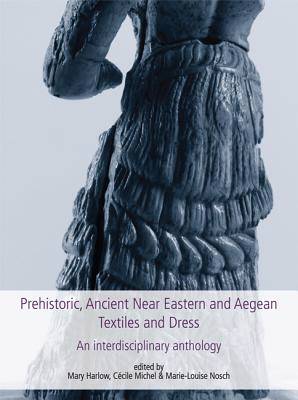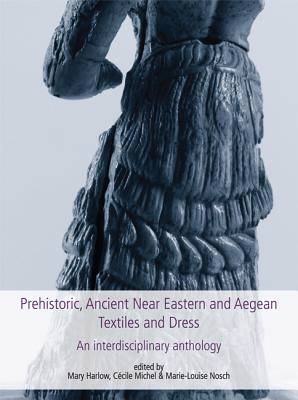
En raison d'une grêve chez bpost, votre commande pourrait être retardée. Vous avez besoin d’un livre rapidement ? Nos magasins vous accueillent à bras ouverts !
- Retrait gratuit dans votre magasin Club
- 7.000.000 titres dans notre catalogue
- Payer en toute sécurité
- Toujours un magasin près de chez vous
En raison de la grêve chez bpost, votre commande pourrait être retardée. Vous avez besoin d’un livre rapidement ? Nos magasins vous accueillent à bras ouverts !
- Retrait gratuit dans votre magasin Club
- 7.000.0000 titres dans notre catalogue
- Payer en toute sécurité
- Toujours un magasin près de chez vous
Prehistoric, Ancient Near Eastern & Aegean Textiles and Dress
An Interdisciplinary Anthology
Harlow Mary
55,95 €
+ 111 points
Description
Textile and dress production, from raw materials to finished items, has had a significant impact on society from its earliest history. The essays in this volume offer a fresh insight into the emerging interdisciplinary research field of textile and dress studies by discussing archaeological, iconographical and textual evidence within a broad geographical and chronological spectrum. The thirteen chapters explore issues, such as the analysis of textile tools, especially spindle whorls, and textile imprints for reconstructing textile production in contexts as different as Neolithic Transylvania, the Early Bronze Age North Aegean and the Early Iron Age Eastern Mediterranean; the importance of cuneiform clay tablets as a documentary source for both drawing a detailed picture of the administration of a textile industry and for addressing gender issues, such as the construction of masculinity in the Sumerian kingdoms of the 3rd millennium BC; and discussions of royal and priestly costumes and clothing ornaments in the Mesopotamian kingdom of Mari and in Mycenaean culture. Textile terms testify to intensive exchanges between Semitic and Indo-European languages, especially within the terminology of trade goods. The production and consumption of textiles and garments are demonstrated in 2nd millennium Hittite Anatolia; from 1st millennium BC Assyria, a cross-disciplinary approach combines texts, realia and iconography to produce a systematic study of golden dress decorations; and finally, the important discussion of fibers, flax and wool, in written and archaeological sources is evidence for delineating the economy of linen and the strong symbolic value of fiber types in 1st millennium Babylonia and the Southern Levant. The volume is part of a pair together with Greek and Roman Textiles and Dress: An Interdisciplinary Anthology edited by Mary Harlow and Marie-Louise Nosch. Isbn 9781782977155
Spécifications
Parties prenantes
- Auteur(s) :
- Editeur:
Contenu
- Nombre de pages :
- 224
- Langue:
- Anglais
- Collection :
- Tome:
- n° 18
Caractéristiques
- EAN:
- 9781782977193
- Date de parution :
- 28-02-15
- Format:
- Livre relié
- Format numérique:
- Genaaid
- Dimensions :
- 216 mm x 279 mm
- Poids :
- 1111 g

Les avis
Nous publions uniquement les avis qui respectent les conditions requises. Consultez nos conditions pour les avis.






